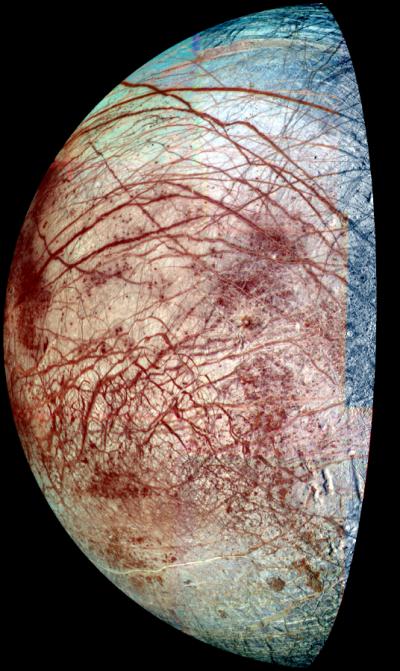Some molecules exist in handed, or chiral, forms. A left-handed form and a right-handed form. The building blocks of proteins, the amino acids, for instance, are chiral, as too are the proteins they form and even the genetic material, DNA, that codes for the proteins. Chiral molecules can also be made synthetically, several drugs are produced in just the left or right-handed form for improved efficacy and to reduce side-effects.
The study of extraterrestrial chirality, however, could be used to detect signs of life in samples from elsewhere in the Solar system.

Tracey Thaler
Tracey Thaler, Andreas Bommarius, and Rick Trebino and colleagues at Georgia Institute of Technology are hoping to develop a simple analytical technique that could be used on future space missions to probe for signs of life.
Astrobiologists – those scientists searching for life beyond the Earth – regard the presence of chiral biomolecules and liquid water to be the essential criterion for extraterrestrial life. However, because chiral molecules can be made synthetically as well as biologically, it’s not enough to just find them on other planets, explains Thaler. We need to show a change of chirality over time. That would indicate the activity of metabolic enzymes that can change one chiral form into another, a process known as racemization.

Andreas Bommarius
Racemization occurs only in biological systems, and putatively astrobiological systems. Detecting racemization could be almost as easy as putting on a pair of Polaroid sunglasses. A chirally pure sample is said to be optically active, it rotates the plane of polarised light, the kind of light seen through Polaroid lenses. A racemic mixture on the other hand does not rotate light. The analytical technique of polarimetry, which does not rely on prior knowledge of any molecule being tested, can reveal whether a sample is optically active or not and be used to follow any change in activity over time.

Researchers have confirmed that racemizing enzymes could work even at the sub-zero temperatures found on chilly planets or moons such as Europa (shown). (Credit: Photo Courtesy of NASA)
The GATech researchers are developing a new and improved polarimeter that can detect even smaller concentrations of optically active compounds than is possible with current devices. Thaler and her colleagues have now demonstrated that even at the chilly temperatures that exist on moons such as Europa and the planet Mars, the earthly enzymes that racemize chiral compounds still function. Tracey’s study is significant because it marks the first time that racemization has been looked on as a sign of life on other planets, Bommarius says. An interplanetary polarimeter could quickly detect changing optical activity and so reveal life on another world without needing to know anything about the specific biochemistry taking place. Thaler presented results from the study at the national meeting of the American Chemical Society in Atlanta on 30th March.
Further reading
Andreas Bommarius
http://www.chbe.gatech.edu/fac_staff/faculty/bommarius.php
Suggested searches
chirality
astrobiology